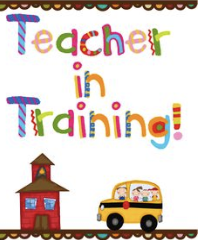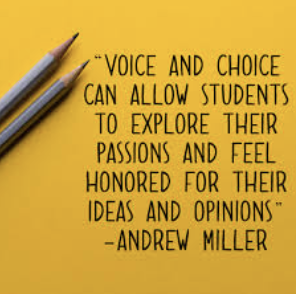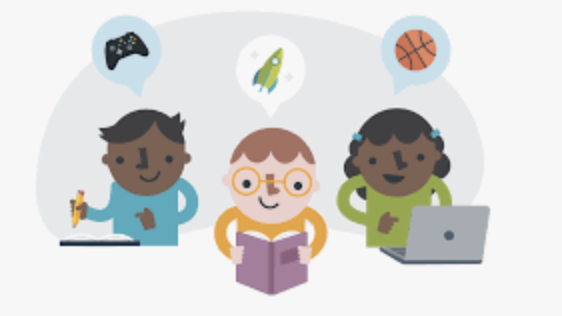
As aspiring educators, we spend a great deal of time in classrooms observing, practicing instructional techniques, and learning about best practices to elicit evidence of learning. This year, my educational fieldwork allowed me to take a deeper look at higher order thinking in the classroom. I found myself examining this concept from a “different from typical perspective”-the student perspective! By doing so, I was able to explore the concepts of student voice and choice in the classroom.
The Glossary of Education Reform defines student voice as “values, opinions, beliefs, perspectives, and cultural backgrounds of individual students and groups of students in a school, and to instructional approaches and techniques that are based on student choices, interests, passions, and ambitions.”
Student autonomy empowers students to choose how they learn. Selena Kiser, Second grade teacher; Ed.D. in Educational Leadership & PolicyAnalysis points out that “Many teachers are incorporating student choice into their classrooms as an innovative teaching method. Increased participation and empowerment result from student choice. It motivates kids to study new topics. It allows pupils to demonstrate what they know while also going much beyond. Students can find what they want to learn in an environment where they have control.” The following recommendations come from Rebecca Alber’s article “5 Ways to Give Your Students More Voice and Choice.”
- Stuff we want to know about: Brainstorm an ongoing class list of stuff they want to know about and are interested in—a phenomenon, an event, or a law, for example. If you are a science, math, or history teacher, you can ask that it be about your field, but I also encourage you to have it be about anything (and then you can find connections to content later). Inquiry is a skill all teachers should build regardless of content.
- Task force teams of inquiry: Let teams form (or help with this) and ask each team to select a topic from the brainstorm list. Their mission is to explore, research, and present on that topic. If you’re thinking that’s too much valuable class time off the curriculum or content, find a way to connect it to the educational standards your school follows. (Reading, writing, speaking, and listening are involved here, so turn to those Common Core anchor literacy standards.)
- Assessing their needs and wants: We should never underestimate the power of the five-point Likert scale as a quick, quantitative measure to see where students are. You can create several statements for a unit of study to gauge student interest first, and then their understanding and experience with the content, materials, activities after.
- Think-alouds: Model for students your learning as you read aloud an article on a current event or a topic of study. For example, as you read, pause, asking questions and make comments and connections to things you already know or even things you’ve explored as a class. Have students do the same with a partner, then eventually in groups of three or four.
- Project options and self-grading: Think about how these two sentences sound: “You will have several projects to choose from” and “You will create a trifold poster….” They might remind us that no matter the age, we all like to have choices, especially when it comes to demonstrating our skills and abilities.
So offer up plenty of options in types of projects and also collaborate with your students in creating a criteria chart for each project. Having more of a stake in the work, students can use the criteria to grade themselves in the end. Be sure to include an opportunity for them to also do some reflective writing on why they’ve assigned themselves that grade. Learning tends to stick better when we reflect.

Giving students a voice and choice—the ability to learn how they learn best and to direct some aspects of their learning—helps them feel personally committed in their learning and offers them a role in shaping and producing it rather than merely receiving it.
Teaching is about student voice. Teacher efficacy, self-confidence, and the desire to stay in the profession can all be positively impacted from student involvement during the teaching process. This has to be considered in planning, instruction, and assessment. Student choice increases enthusiasm for school, curricula, and personal interests. These experiences help them expand their imagination. They gain valuable skills and broaden their interests. These kinds of options allow for more meaningful learning and higher order thinking. Student voice and choice will be an embedded component of my classroom culture. I want to build a community of learners who feel like they are “getting something out of their time in school”!
